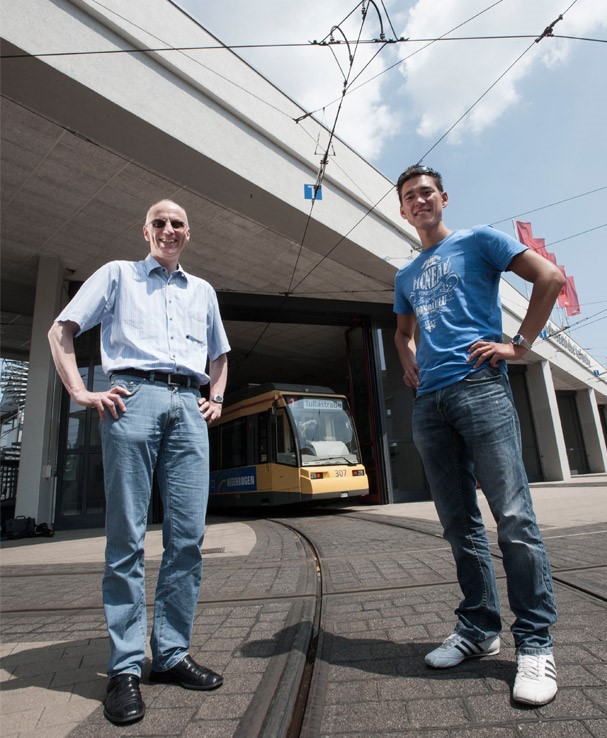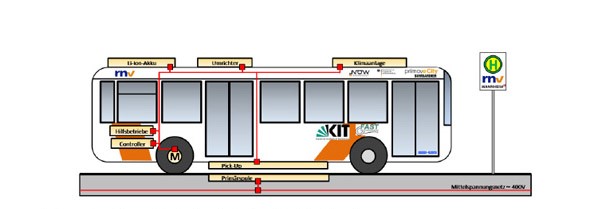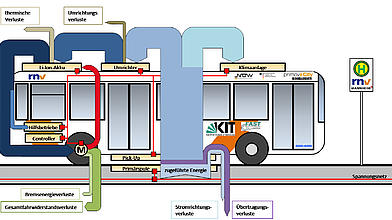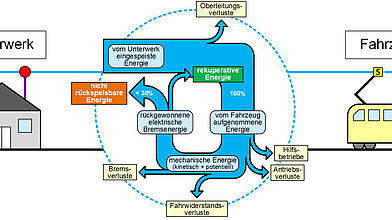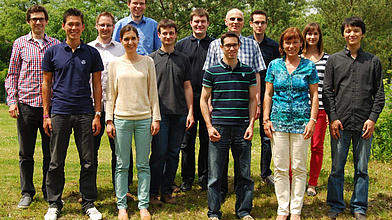How Peter Gratzfeld is working on a new generation of public transport.
They transport millions of people every day, are indispensable for mass mobility and shape cityscapes all over the world. They squeal and rumble through and under our streets, cause traffic jams, construction work and obscure the view of many a landmark: streetcars, buses and subways are an essential part of public transportation, but they are also often annoyingly loud, high-maintenance and energy guzzlers.
"Every time a streetcar goes around a bend, there is massive material wear on the wheel and rail, and when a streetcar brakes, an enormous amount of expensive energy is often lost. Too little is invested in the technological development of public transport," says KIT Professor Peter Gratzfeld. With his Chair of Railway Systems Engineering, he is researching how local public transport by rail and road could be brought into a new era.
"Technologically speaking, the world could already look very different today. Our task is to show what is possible."
To describe the vision, it's simple: Professor Gratzfeld wants electrically powered buses and trains without overhead wires that glide through the streets energy-efficiently, quietly and without wear. Behind this, however, lie many individual technological revolutions: For example, the development of active track guides to reduce wear on wheels and rails, the complete use of braking energy, alternative drives for streetcars, or contactless energy transfer, which is already familiar from applications such as electric toothbrushes or induction hobs. "On a large scale for the operation of buses and streetcars, the use of inductive energy transfer is much more complex. The alternating magnetic field must be strong enough to transmit sufficient energy to the vehicles, but must not have any effect on passers-by," explains Peter Gratzfeld.
Contactless energy transmission supplies streetcars or electric buses with an electromagnetic receiver attached to their underside. The transmitter is located below the road surface or in the rail bed at selected stops. Since the beginning of the year, Bombardier Transportation GmbH, Rhein-Neckar-Verkehr GmbH, and KIT have been working together to make this idea a reality on bus line 63 in Mannheim and to prove its practicality. Professor Gratzfeld and his team are in charge of simulating and analyzing the energy flows and the requirements on the electrical supply network.
Looking beyond the vehicle is Gratzfeld's specialty: "Our scientific approach is two-track: on the one hand, we research technological options, and on the other, we analyze what impact new technologies have on the entire public infrastructure." This is an important aspect for development in public transport, because conversions, for example in power supply, routing and vehicle technology, are expensive and complex. Professor Gratzfeld's research is therefore a particularly good thematic fit for Karlsruhe: The enormous structural conversion of the city's streetcar system to a combination of subway and commuter rail will keep the city in suspense until at least 2017.
